New Delhi: China has come under increasing international fire for its treatment of the Uyghur Muslim minority in the Xinjiang autonomous region. From setting up Soviet Gulag-style ‘re-education centres’ to separating children from parents, China has been accused of subjugating the minorities. Islamic nations like Pakistan are accused of watching silently while others condemn China’s treatment of the Uyghurs.
The Uyghur people have strong religious beliefs, which go against the Communist Party of China’s policy of state atheism, resulting in policies that have been termed repressive. In 2015, Heiner Bielefeldt, the United Nations special rapporteur on freedom of religion or belief, had said China’s actions were “a major problem”, which China protested against at the UN.
Things have only intensified since Chen Quanguo was transferred from Tibet and made the CPC’s secretary for Xinjiang in August 2016.
Now, ThePrint has found through satellite imagery that the state has even changed the funeral process of the Uyghur Muslims to suit the Chinese way of life.
Burial Management Centres
In the Islamic tradition, the dead are carried in a funeral procession called janaza from their home to the nearest mosque. After funeral prayers, they are laid to rest in a cemetery, over which tombstones are placed. The tombs in Uyghur cemeteries are generally made out of mud and clay.
But now, the Chinese government in Xinjiang has apparently started destroying Uyghur cemeteries, and is instead constructing new buildings called Burial Management Centres, operated by more than a dozen security personnel.
The razing of cemeteries seems to have been going on for years, but picked up pace around the time of the July 2009 riots in Xinjiang’s capital, Urumqi. Satellite images from April and October that year show drastic differences.
The official version for the removal of these cemeteries is infrastructure development, such as roads, ecological parks and high-rise buildings.
Also read: Islamic nations shamelessly silent while others condemn China’s treatment of Uyghur Muslims
Urumqi cemeteries
There were two cemeteries in Tengri Tagh area of Urumqi city, which have now disappeared, while a third is slated to be razed soon.
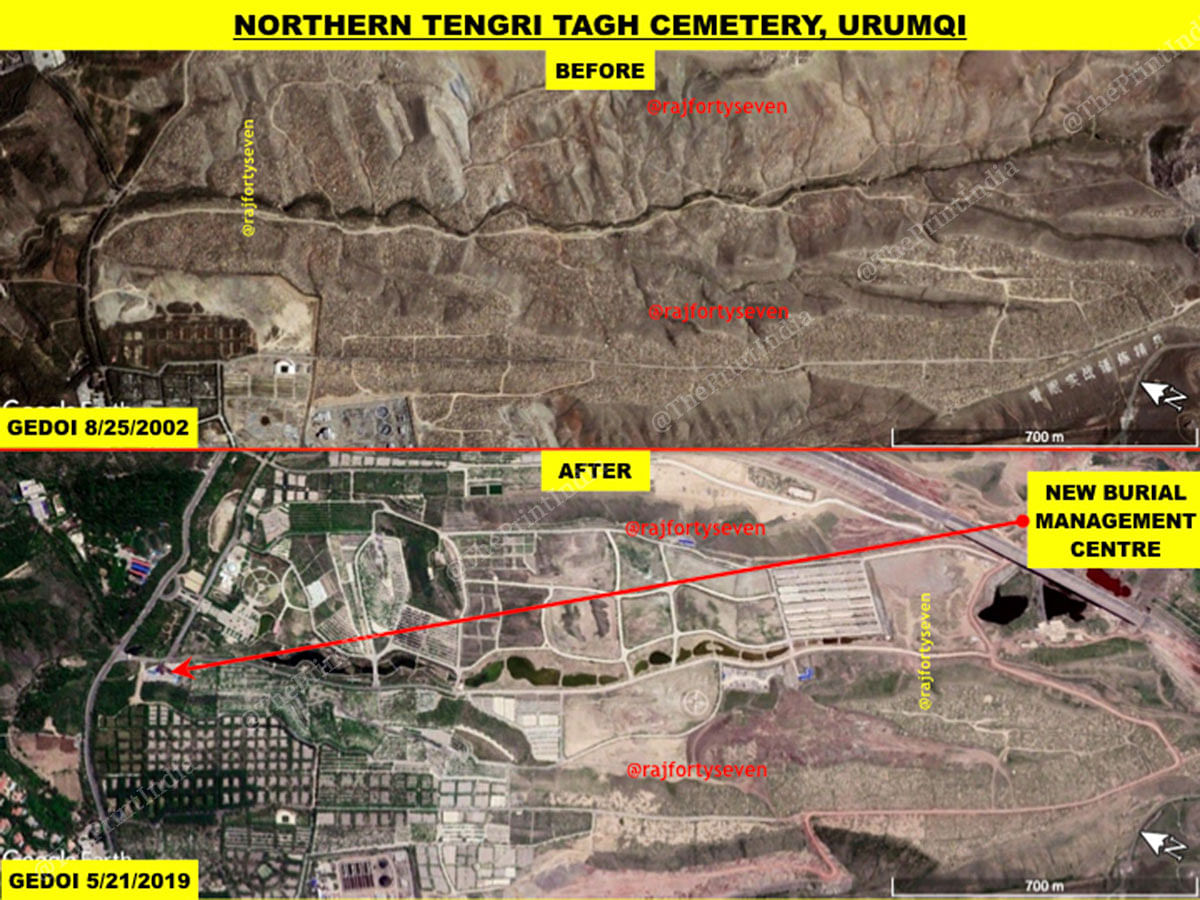
The northern cemetery, which covered more than 825 acres, has been converted into the Dongshan Ecological Park.
The south-western area of this former cemetery has possibly been handed over to the People’s Liberation Army as a training ground — there is evidence of infantry training in the satellite image.
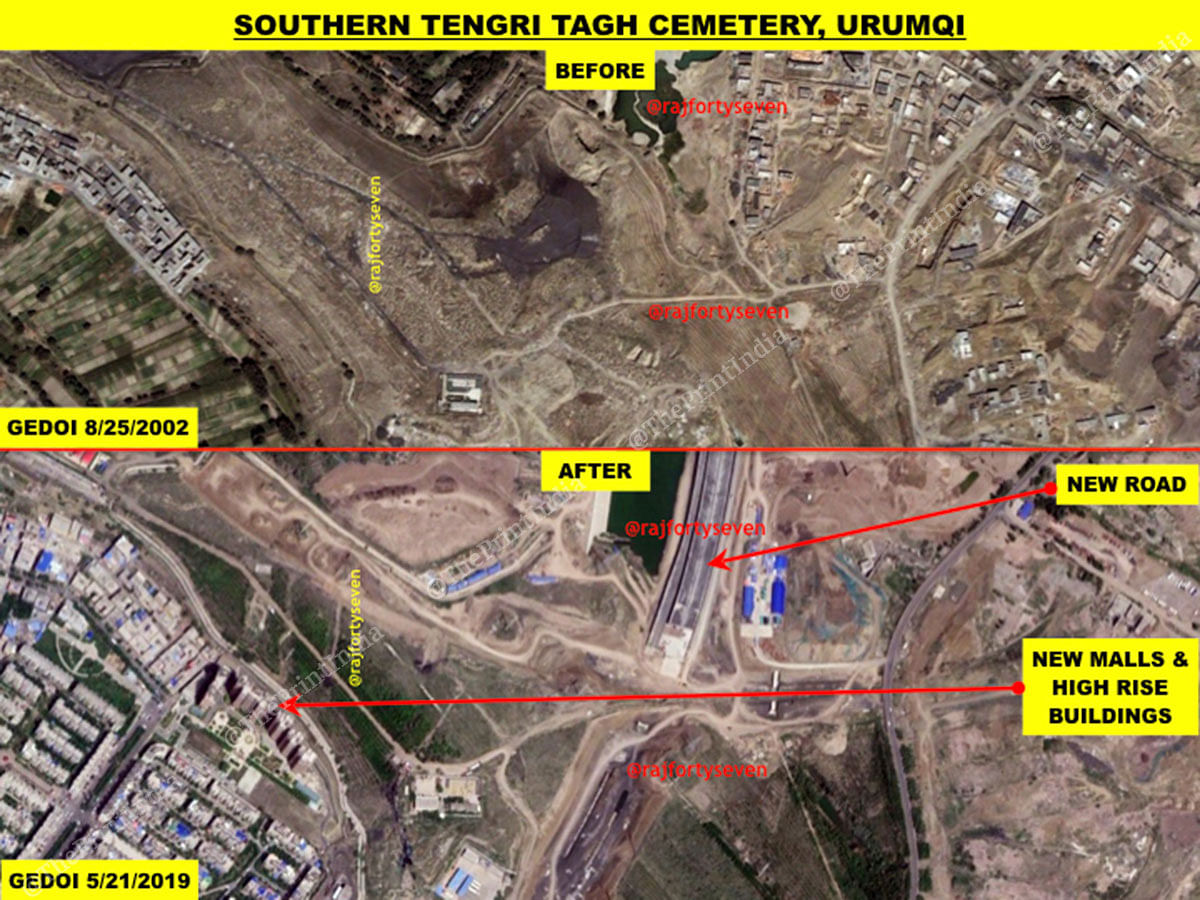
Meanwhile, the southern cemetery, which covered more than 130 acres, has been cleared, and trees and bushes are now being planted. This area is being used to build a highway.
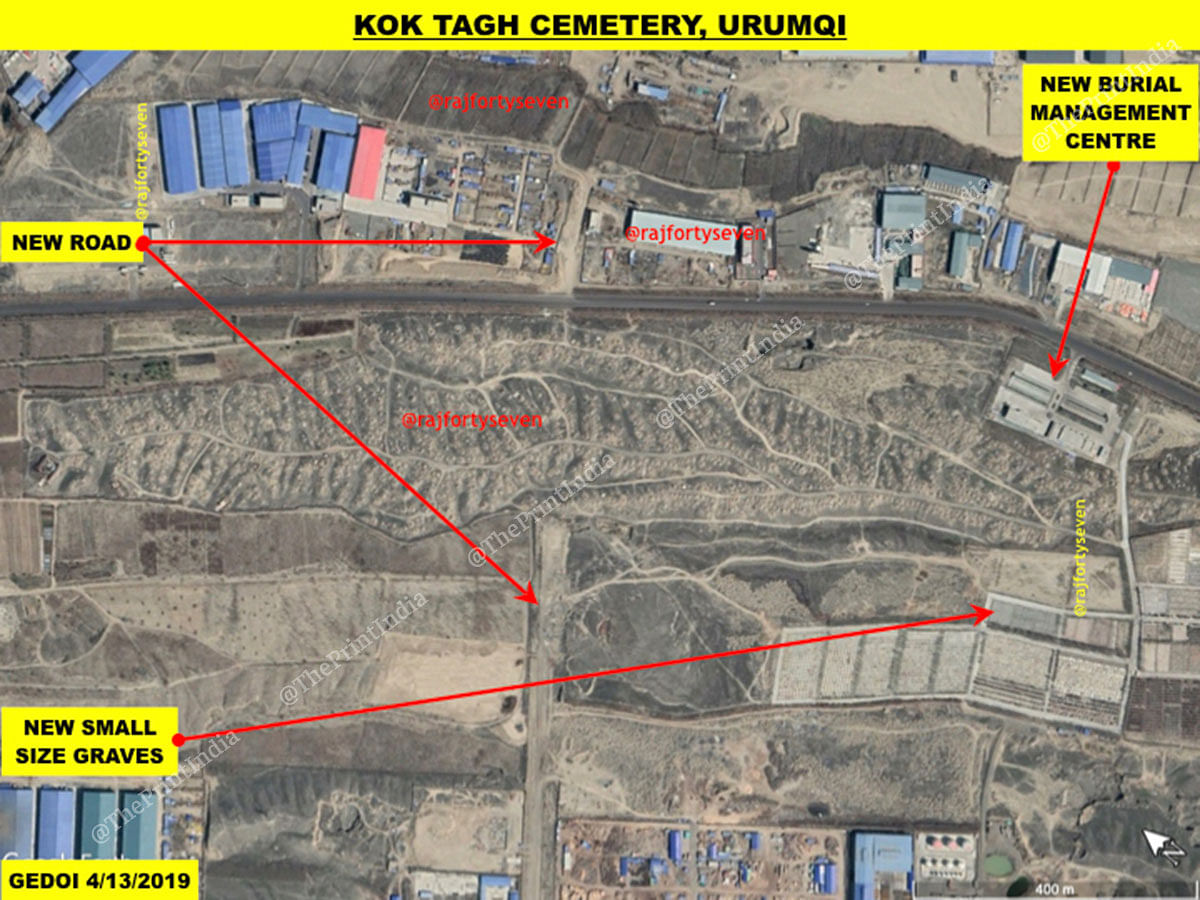
The third cemetery, in Kok Tagh, is proposed to be razed to make way for a road when the government gives it a nod.
Exhuming remains
The authorities are said to put out notices about razing the cemeteries, giving relatives a month’s time to exhume the remains and shift them to the new Burial Management Centres.
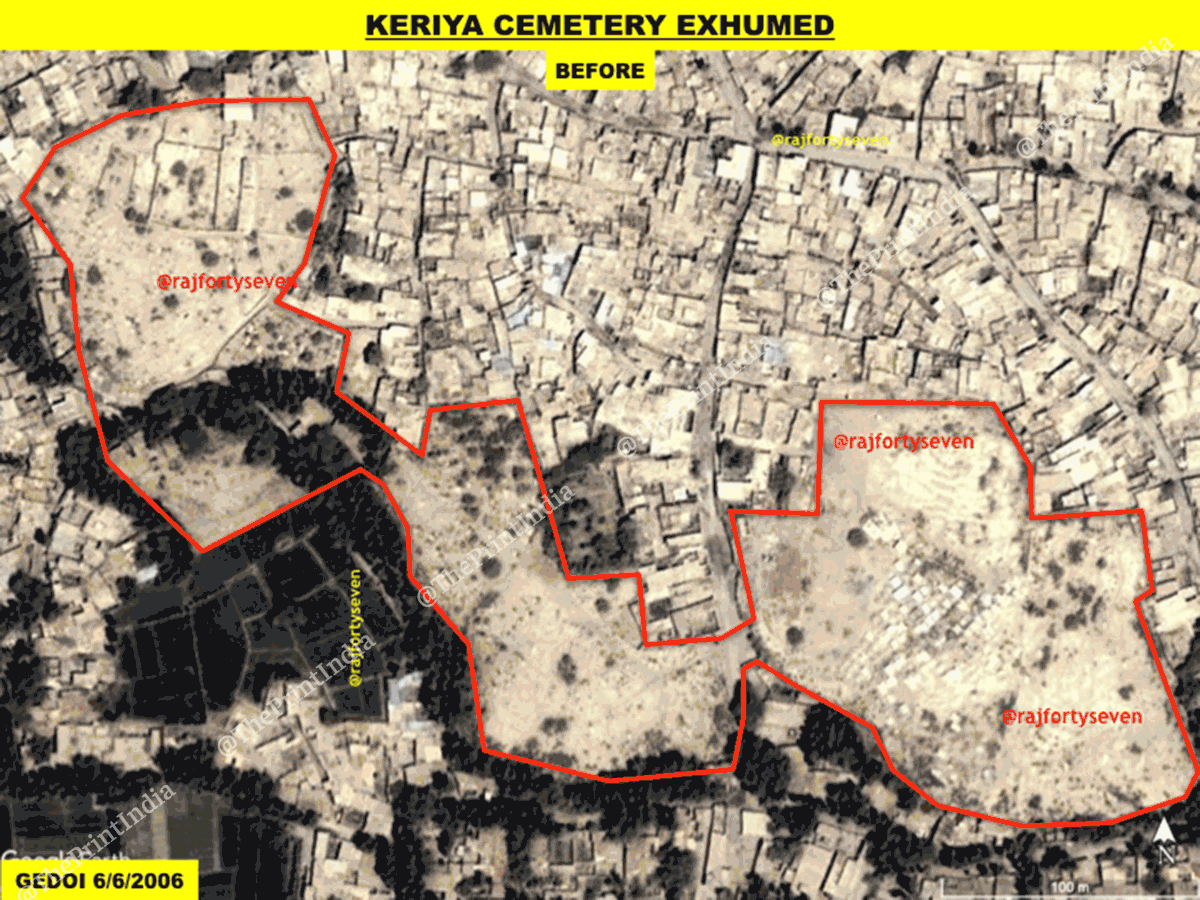
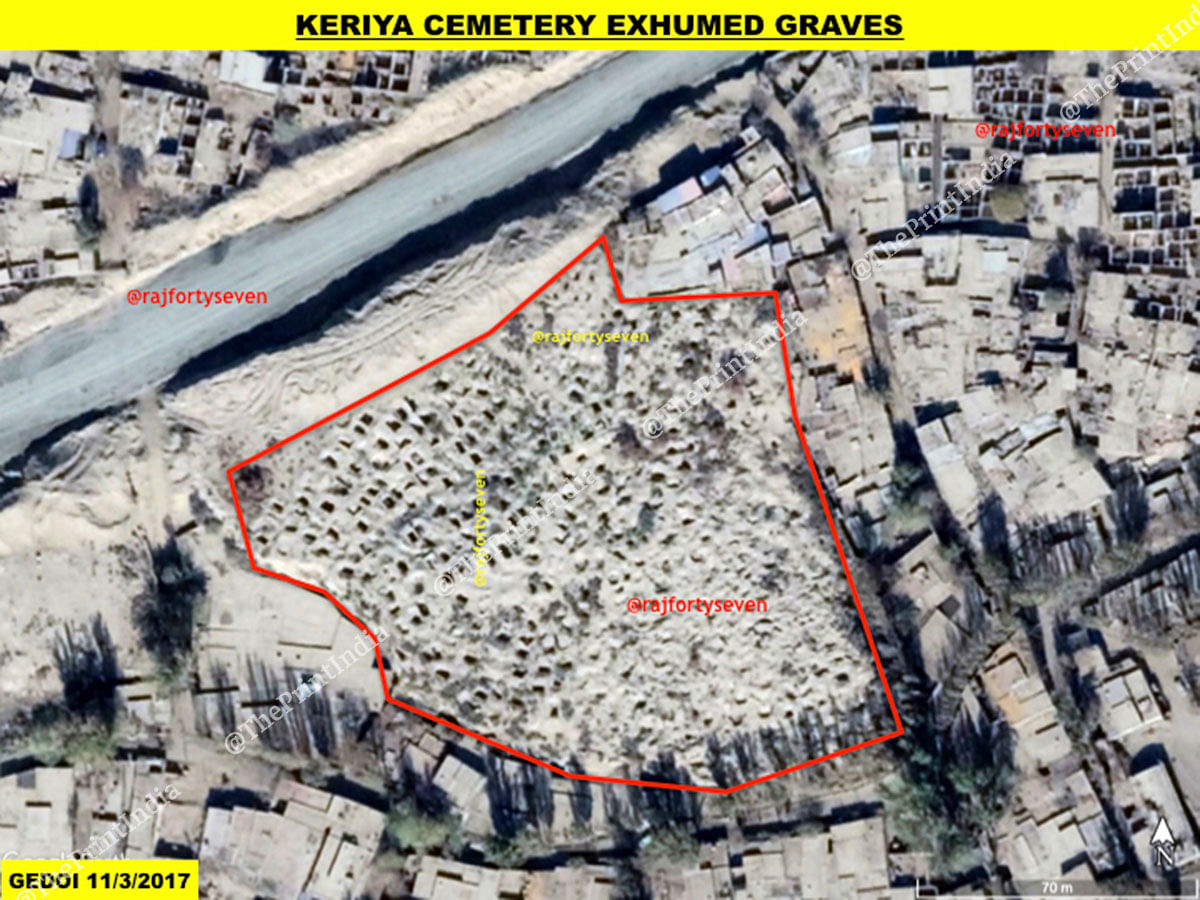
Research for this article showed one cemetery in Keriya where locals possibly decided to exhume the remains and re-bury the corpses nearby. The cemetery, covering 8.5 acres, made way for a city road.
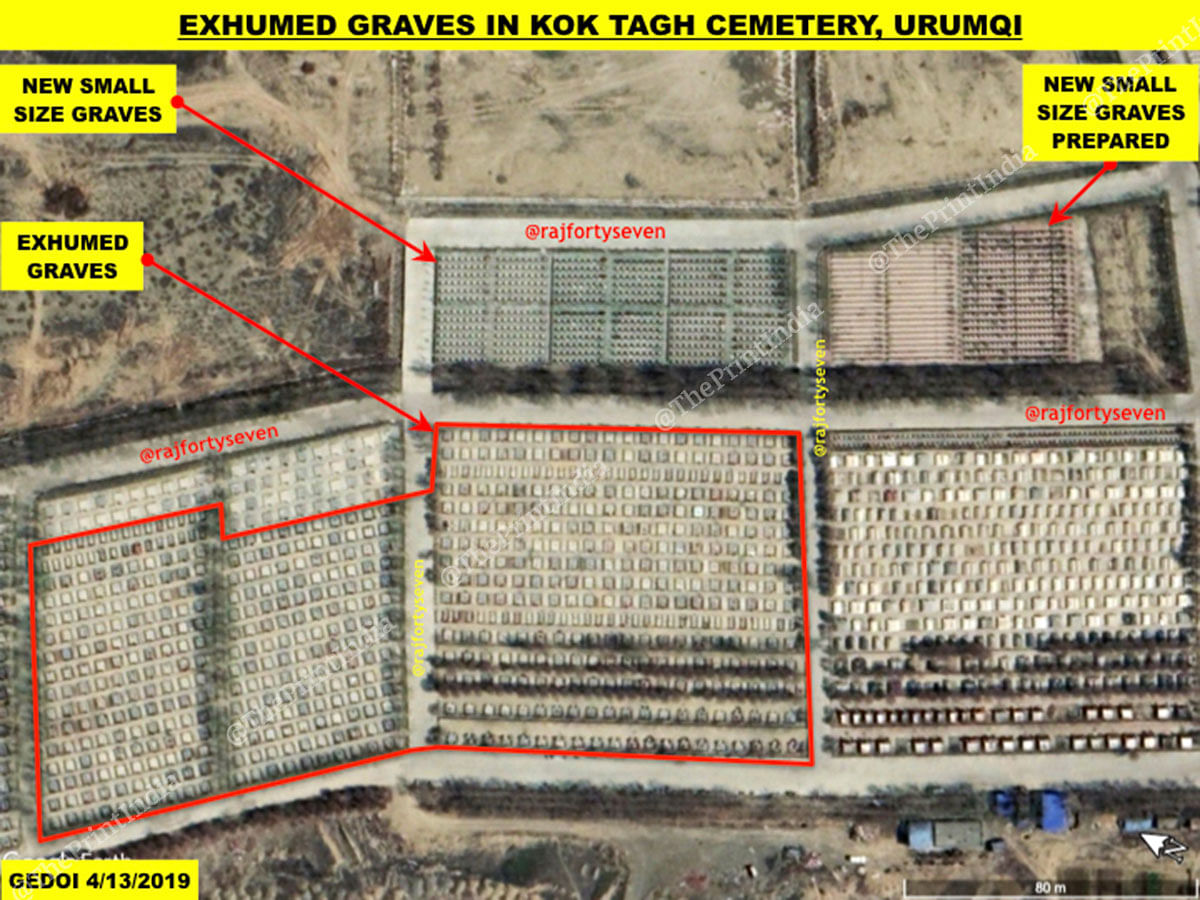
Another case of exhumation can be observed on satellite imagery at the Kok Tagh cemetery. The pre-August 2016 graves of 3m x 3m size have been replaced by smaller graves, 0.9m x 0.9m in size. The new graves have barely enough place for a sitting-up burial.
Also read: China separates kids from parents in Xinjiang ‘gulags’ as Uyghur Muslim suppression mounts


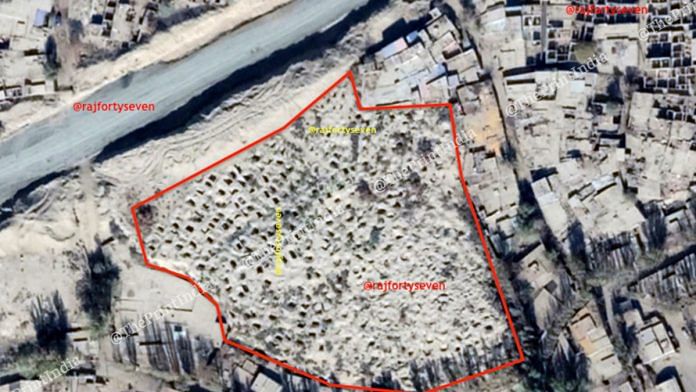

Where are the leaders like ajam khan and ovaisi and big taliban, isis etc.? Why they are not going to die for a cause now?